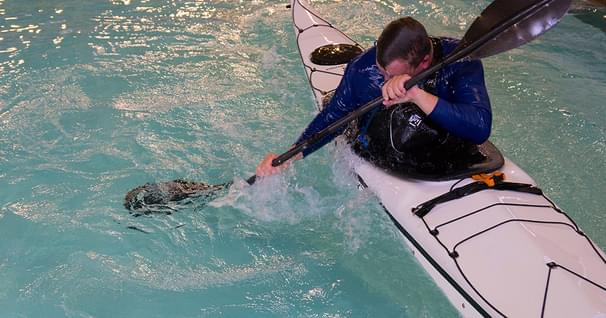Balance Tips for Beginners
Hi, I'm Robert Stehlik with Blue Planet Surf and today I'm going to talk to you a little bit about balancing on the board.
A lot of times, one of the biggest challenges is, when you're starting out, is just staying on top of the board and balancing. I'm gonna give you a few tips on how to make it easier for you to balance when you're first starting out. Probably the most important thing is to get the right gear. So you want to make sure you have a board and paddle that's right for you. So the more you weight, the taller you are, the bigger the board should be, and the wider the board should be. The width is probably the most important thing for your balancing. The wider the board, the easier it is to balance. This board here is a 9'6" by 30", and then obviously the smaller you go the more tricky it is to balance on a board. But as you get better, you'll be able to balance on much smaller boards than when you first start out. So, yeah, let's get started.
Heading out, it's good to have a place where you can get on your board from a standing position, like shallow water is good. If you have to do it from a dock, there's different techniques for that too. Today I'm just going to show you how to do it when you're standing in shallow water. You first just get on you knees on the board. You always want to be right in the middle where the handle is, that's where you need the center of the weight. If you're too far back, the tail will sink. If you're too far forward, then, the tail will kind of stick up out of the water. So you want to make sure you're balanced properly on the board, where the weight's right over the middle of the board and the board's flat in the water.
Once you get kind of comfortable in the kneeling position - if you're struggling like this already, you might wanna try to get a wider board, a more stable, bigger board. If you're already struggling just kneeling, than it's gonna be really hard to get into the standing position. So from your kneeling position, try to take a few strokes, and you don't have to hold the handle way up here, you can hold the paddle shorter. Take a few strokes to get the board moving. Ideally you want always start going into the wind first. And then, put the paddle in front of you, put your feet where your knees were, and then stand up, look forward and start paddling.
This is usually the way I teach to get up. Another way if you're - some people have really stiff knees and have a hard time getting from that kneeling position to the standing position, so I'll show another way to do it. If you're on your knees and you have a hard time just from your knees to a standing position, another way that works for some people is to put the paddle in front of you and then slowly get from that kneeling position into the standing position and use the paddle to help you stand up. I don't know if that's necessarily easier, but that works for some people.
Okay, so remember to be right in the middle of the board so the board's flat in the water, keep your knees bent, look forward, don't look down at the board, don't be hunched over or bent forward, and then start paddling and keep you paddle in the water. If you do start to loose your balance, get low and put your paddle in the water for balance. The further you can get the paddle out to the side, the more stability it's going to give you.
Now if you're on a smaller board, the smaller the board is, the harder it's gonna balance, obviously. And the shorter the board, is the more important it is to be in the middle. This is a 9'6" so this is a relatively short board and I soon as I put some weigh further back, you can see that I'm going to sink the tail and it's gonna be much less stable further back then further forward. And now moving around, moving my feet around, it's tricky because if I un-weigh one foot the board will rock. Actually the best way to move around on a shorter board is to jump like small jumps and do the surf stance a tad forward. By making these little jumps you can un-weigh both feet at the same time with out going in the break right away. So, moving your way back to sink the back makes it easier to turn as well.
Alright, so some things to remember when you're first starting out, bend your knees, keep your upper body forward, look forward, keep the paddle in the water, get the board moving, stand right in the middle, keep your knees soft and just let your body naturally do the balancing for you. Alright, good luck and enjoy. The most important thing is to have fun, right?
Related Articles
As the days get shorter and the weather gets colder, it becomes harder to get out and paddle and easier…
Mention “pool session” and the first image that pops into most kayakers minds is a class in how to roll.…
Paddling alone is a recipe for danger. Bring a buddy and stay safe on the water.



